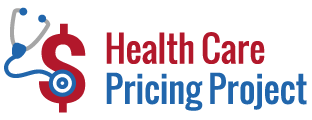About The Health Care Pricing Project
The Health Care Pricing Project uses "big data" to analyze the variation and the growth in health care spending for the privately insured.
The United States spends more on health care than any other wealthy nation. High health care costs are an enormous strain on American families and on the economy. We focus on why certain regions of the US spend more than others and examine why certain areas had higher growth in health spending over the last ten years. In particular, this project focuses on how and why health care providers' prices vary across the US and grow over time. The goal of our work is to provide evidence that can shape more effective public policy.
In the first phase of our work, we examine how health spending and health care providers' prices vary across the US. We find that the highest spending regions in the US spend more than 300 percent more than the lowest spending areas. Moreover, there is little correlation between how much regions spend on Medicare beneficiaries and the privately insured. Most of what we know about health care spending flows from the analysis of Medicare data. This low correlation implies that the analysis of Medicare data is not informative about spending for the privately insured. We also find that the price of health care services is a key driver of the variation in health spending for the privately insured. We find that hospital prices for routine services vary by a factor of more than ten across the nation and over a factor of four within cities. Hospitals with greater market power have significantly higher prices.
This project relies on a large database of health insurance claims from Aetna, Humana, and UnitedHealth - three of the nation’s five largest insurers. These data are provided by the Health Care Cost Institute and include over 100 million unique individuals from 2002 through 2011. In the later years, the data capture 5 percent of health spending and nearly 1 percent of US GDP. Crucially, these data include health care providers’ negotiated transaction prices. This gives us claims level detail on health care spending for approximately 30 percent of Americans with employer-sponsored insurance.
Going forward, we will be carrying out research in a variety of areas including examining:
- Health care spending growth over time;
- Health care providers' prices growth over time;
- The causal relationship between market structure and hospital prices;
- The relationship between changes in Medicare reimbursements and hospitals' negotiated transaction prices.
Please stay tuned and check back often for updates on our ongoing work.

